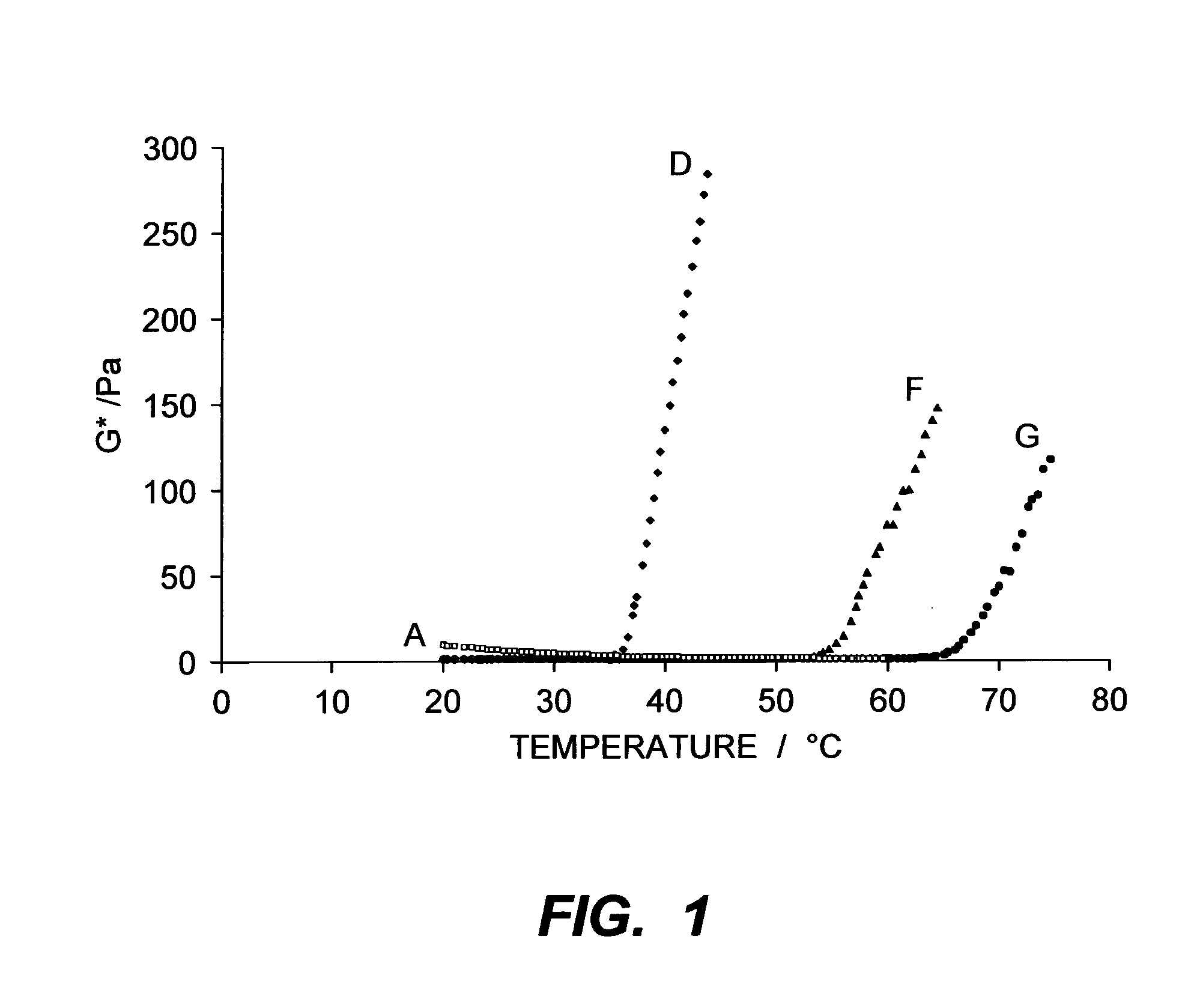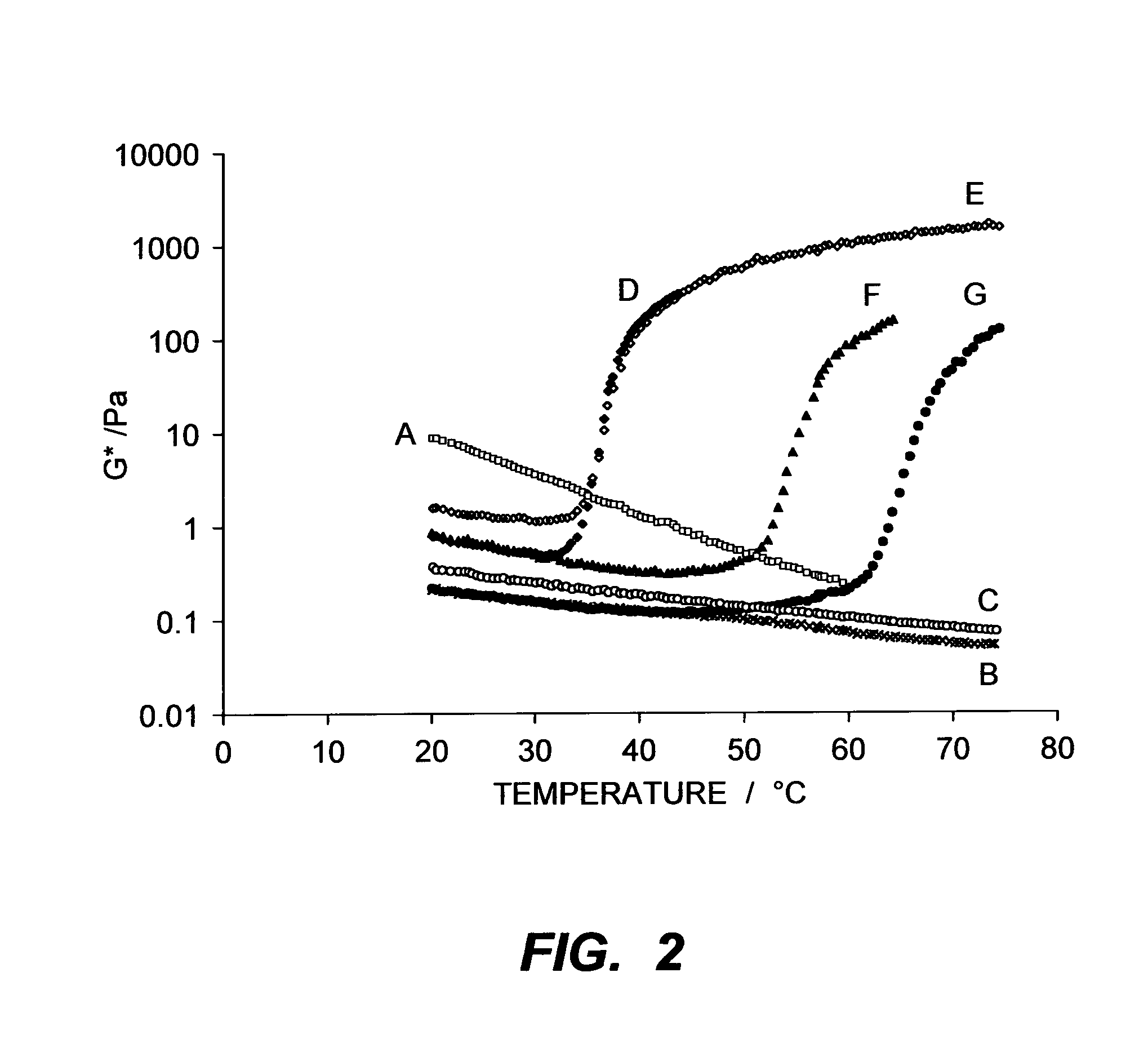Thermally-responsive dispersants for media formulations
a technology of dispersants and media, applied in the direction of inks, coatings, transportation and packaging, etc., can solve the problems of affecting the uniformity of such systems, affecting the dispersibility of media, and waste of water removal, so as to improve the dispersibility and flowability, facilitate manipulation, and reduce the viscosity of the dispersant
- Summary
- Abstract
- Description
- Claims
- Application Information
AI Technical Summary
Benefits of technology
Problems solved by technology
Method used
Image
Examples
examples
Synthesis of Dispersants
[0120]The dispersants may be prepared by methods analogously to the examples herein and in accordance with Makromoleculare Chemie, (1992), 193(9), pages 2505-2517.
example a
Synthesis of Compound (I-1a)
[0121]Mercaptosuccinic acid (1.50 g, 0.010 mol), N-isopropylacrylamide (56.58 g, 0.500 mol) and 2,2′-azobis(2-methylpropionitrile) (0.56 g) were suspended in methanol (1000 ml) in a 3N flask equipped with a reflux condenser. The mixture was degassed for 20 min. by bubbling through argon and then brought to reflux under argon atmosphere. Reflux was continued for a total of 40 h to ensure complete consumption of the monomer. The resulting solution was evaporated under reduced pressure to give a white solid (58.50 g, 100%). Analysis was consistent with the desired structure.
example b
Synthesis of Compound (I-5a)
[0122]Mercaptosuccinic acid (0.375 g, 2.50 mmol), N-isopropylacrylamide (11.32 g, 0.100 mol), acrylamide (1.78 g, 0.025 mol) and 2,2′-azobis(2-methyl-propionitrile) (0.13 g) were suspended in methanol (250 ml) in a 3N flask equipped with a reflux condenser. The mixture was degassed for 30 min. by bubbling through argon and then brought to reflux under argon atmosphere. Reflux was continued for a total of 24 h to ensure complete consumption of the monomer. The resulting solution was evaporated under reduced pressure to give a white solid (13.58 g, 100%). Analysis was consistent with the desired structure.
PUM
| Property | Measurement | Unit |
|---|---|---|
| particle size | aaaaa | aaaaa |
| temperature | aaaaa | aaaaa |
| temperature | aaaaa | aaaaa |
Abstract
Description
Claims
Application Information
 Login to View More
Login to View More - R&D
- Intellectual Property
- Life Sciences
- Materials
- Tech Scout
- Unparalleled Data Quality
- Higher Quality Content
- 60% Fewer Hallucinations
Browse by: Latest US Patents, China's latest patents, Technical Efficacy Thesaurus, Application Domain, Technology Topic, Popular Technical Reports.
© 2025 PatSnap. All rights reserved.Legal|Privacy policy|Modern Slavery Act Transparency Statement|Sitemap|About US| Contact US: help@patsnap.com



